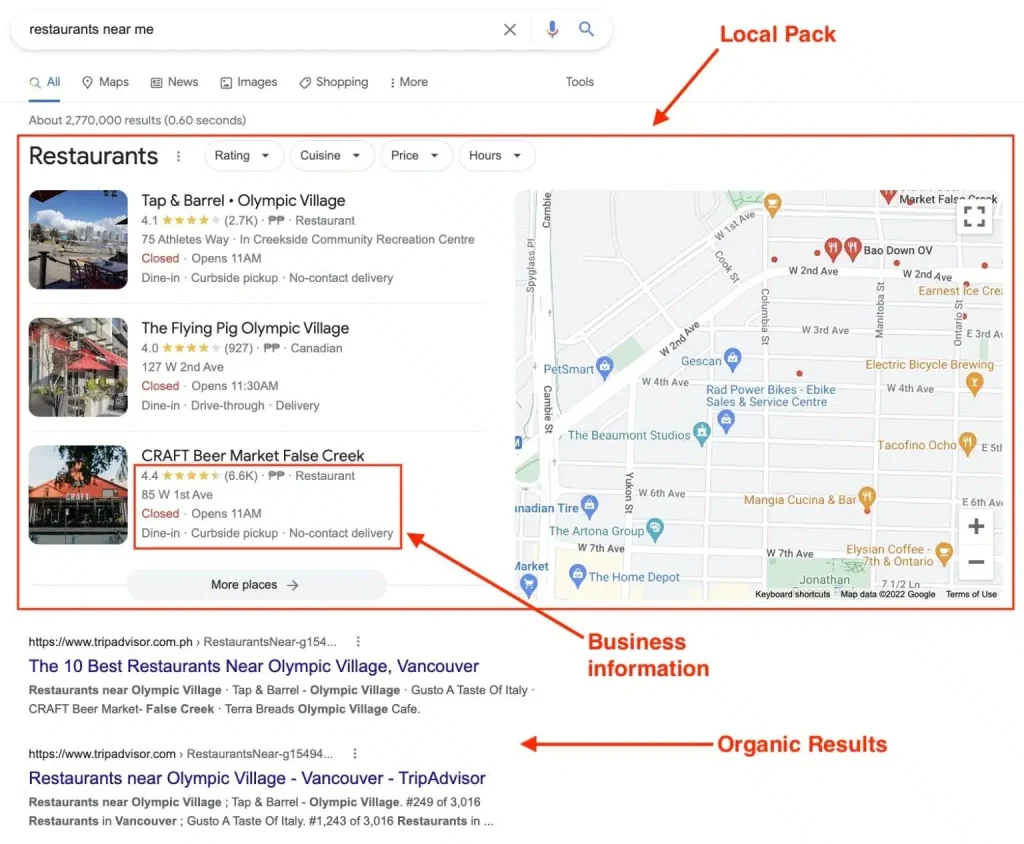Master the fundamentals of SEO with our comprehensive guide. Learn how search engines work, the importance of keyword research, and on-page optimization techniques to boost your website’s visibility and performance. Perfect for beginners looking to enhance their digital marketing strategy.
Understanding SEO basics is key for anyone looking to succeed in digital marketing. Search Engine Optimization, or SEO, is not just about enhancing your website’s visibility; it’s about mastering the strategies that ensure your site performs effectively in search engine results.
This guide explores the essentials of SEO, providing beginners with the foundational knowledge necessary to navigate the complex digital scenario.
From understanding the complexities of search engine algorithms to applying technical and on-page optimizations that go beyond the standard advice, our goal is to equip you with practical skills and insights that aren’t typically explored in basic guides.
We are sharing here techniques and practices that we apply in our daily SEO routines at Boostup Pakistan to achieve consistent results.
Whether you’re a small business owner, a budding digital marketer, or simply curious about how search engines work, this comprehensive guide is designed to smooth your way to SEO mastery.
Understanding Search Engines
At the heart of digital marketing is a fundamental tool: the search engine. Search engines like Google, Bing, and Yahoo are designed to help users find information quickly and efficiently on the internet.
But how do they do this? Essentially, search engines scan, or “crawl,” billions of web pages by following links from one page to another. As they navigate these pages, they index the content found on them, storing vast amounts of data in massive databases.
When a user inputs a query, the search engine scans through this indexed data to provide the most relevant results in what is often referred to as the Search Engine Results Pages (SERPs).
The process by which search engines rank these results is governed by complex algorithms.
These algorithms are sets of rules and calculations that evaluate numerous factors about a website, including the relevance of its content, the quality of its information, and the user experience it offers. Key factors include keywords, site usability, and backlinks from other reputable sites.
Over time, these algorithms are updated to refine how results are evaluated and presented, aiming to enhance the user’s search experience by providing the most relevant and high-quality information as efficiently as possible.
Understanding these algorithms is crucial because they determine not just the visibility of a website but its potential to engage and attract visitors. Each update to these algorithms can shift what practices are considered best for SEO, requiring marketers and website owners to adapt their strategies to maintain or improve their rankings.
This dynamic nature of search engines makes SEO both challenging and exciting, with continuous learning and adaptation at the core of effective digital marketing.
Keyword Research
Keyword research is the foundation of successful SEO. It involves identifying the terms and phrases that potential customers are searching for and incorporating them into your website’s content to improve visibility and rankings.
This process not only helps you understand your audience better but also aligns your content with their needs, increasing the chances of attracting relevant traffic to your site.
Step-by-Step Guide on How to Conduct Keyword Research:
- Identify Your Topics: Begin by listing out the broad topics relevant to your business or niche. These topics will guide you in narrowing down specific keywords.
- Use Keyword Research Tools: Tools like Google Keyword Planner, Ahrefs, SEMrush, and Moz Keyword Explorer provide insights into search volumes, competition levels, and related search terms. These tools are essential for uncovering keywords that can drive targeted traffic.
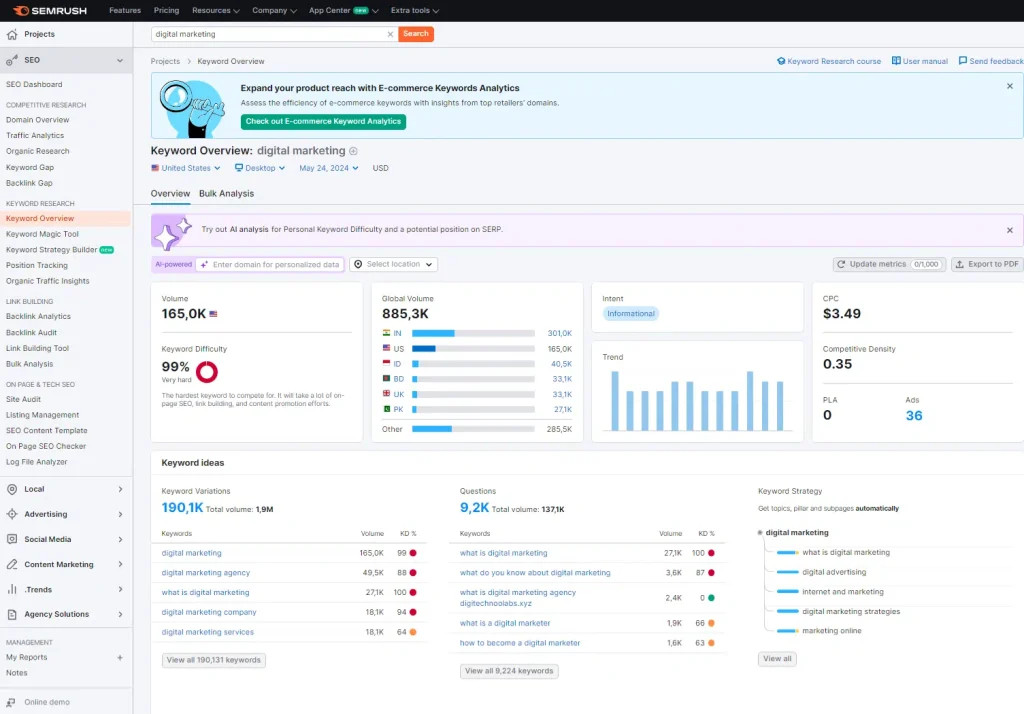
- Analyze Search Intent: Understanding the intent behind searches—whether users are looking to buy, learn, or find a specific website—is crucial. Adapt your keyword strategy to match these intents.
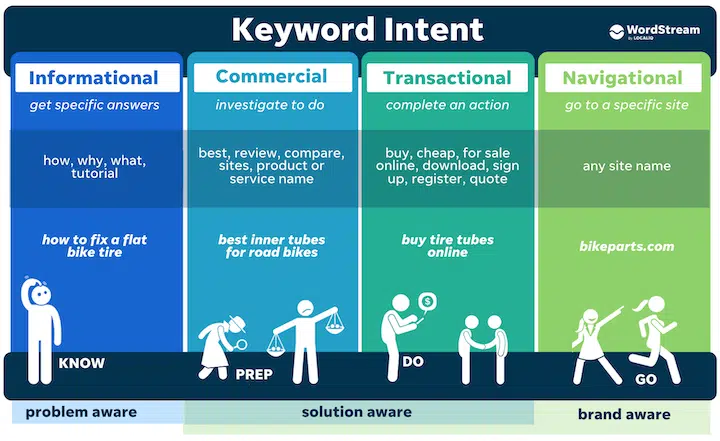
- Look for Long-Tail Keywords: Long-tail keywords are longer and more specific phrases. They often have lower competition and can be highly valuable for SEO.
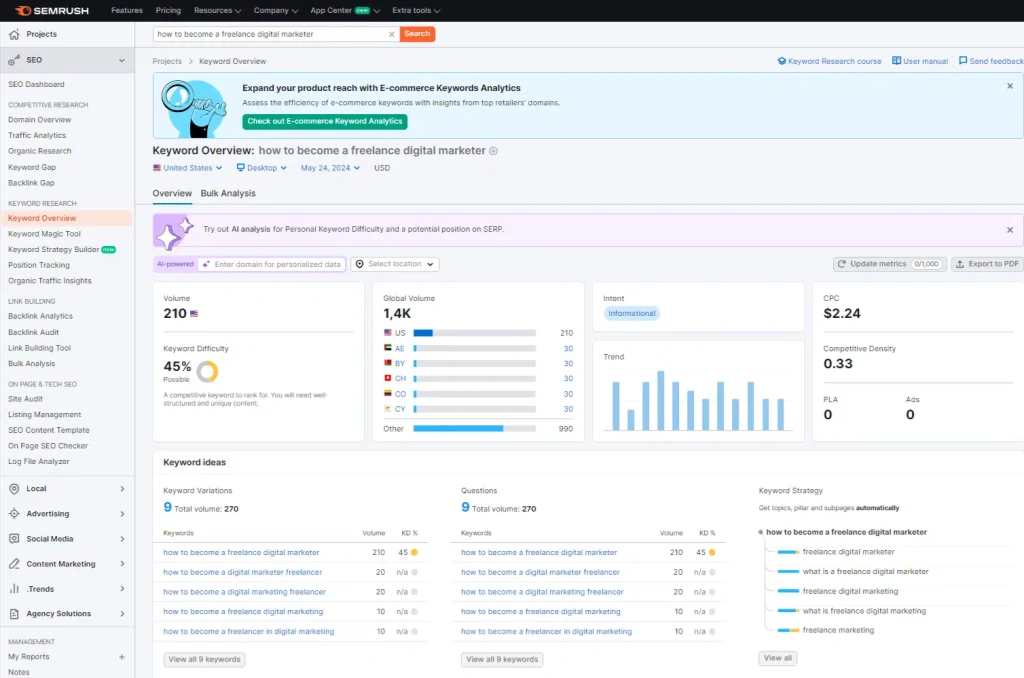
- Evaluate and Prioritize: Assess the relevance, search volume, and competition for each keyword. Prioritize keywords that are highly relevant to your content and have a good balance of search volume and competition.
Techniques for Selecting Effective Keywords:
- Competitor Analysis: Look at the keywords your competitors are targeting and how they rank for those keywords. This can provide valuable insights into potential areas of opportunity for your strategy.
- Keyword Gaps: Identify ‘keyword gaps’—keywords that your competitors are not ranking for but have substantial search volumes. These represent opportunities to capture new audiences.
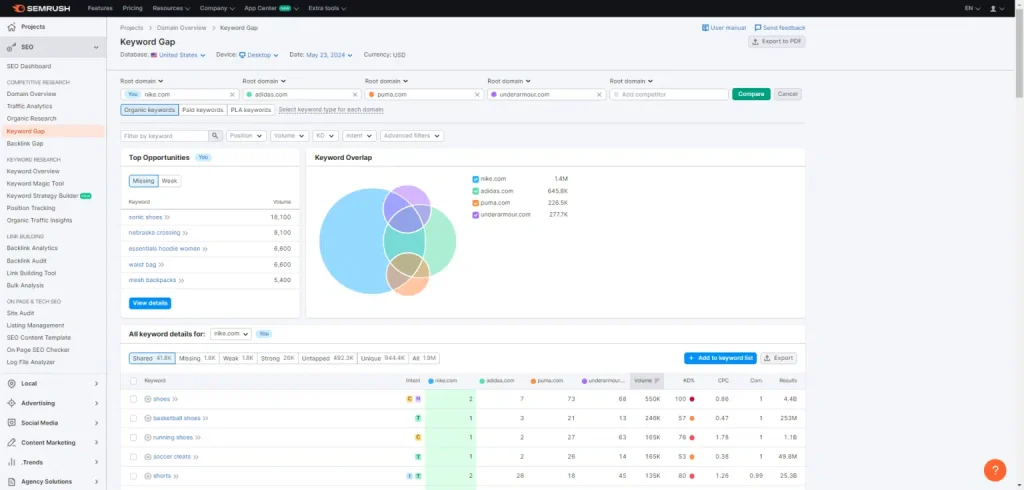
- Seasonal Trends: Consider seasonal variations in keyword popularity, which can be crucial for businesses affected by seasonal demands.
- Continuous Monitoring: SEO is an ongoing process. Continuously monitor the performance of your keywords and make adjustments as needed. This is crucial for staying ahead of changes in trends and search engine algorithms.
Keyword research is not just about finding words to increase your search engine rankings; it’s about connecting with your audience in a meaningful way.
By understanding and implementing effective keyword research techniques, you can significantly enhance your SEO strategy and boost your online presence.
Detailed On-Page SEO Guidelines
On-page SEO is a critical component of any SEO strategy, focusing on optimizing elements within your website that affect your search engine rankings. This type of SEO involves refining the content and structure of your site to make it more attractive to search engines. By enhancing these elements, you can improve your site’s visibility and user experience, leading to better engagement and higher rankings.
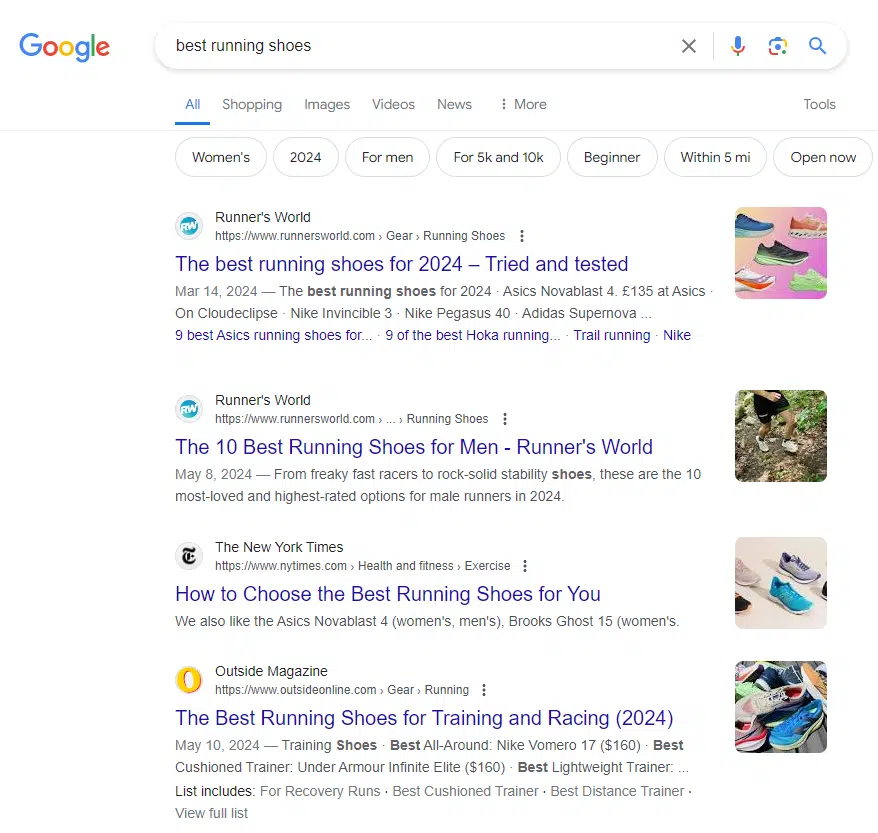
Optimizing Title Tags:
Title tags are the headlines of your web pages that appear in search engine results. They are a major factor in helping search engines understand what your page is about. To optimize your title tags:
- Keep them concise (50-60 characters) to ensure they display fully in search results.
- Include target keywords towards the beginning of the tag.
- Make sure each title is unique and gives a clear indication of the page content.
Optimizing Meta Descriptions:
Meta descriptions provide a brief summary of your web page’s content below the title in search results. Although they don’t directly impact rankings, they influence click-through rates (CTR):
- Limit them to 150 characters to avoid being cut off in search results.
- Include relevant keywords and a compelling call to action to encourage clicks.
- Make them specific to each page to improve relevance for users.
Optimizing URL Structures:
Clear and descriptive URLs can impact the user experience and SEO:
- Use a simple structure that includes keywords and is easy for both users and search engines to understand.
- Keep URLs short and avoid unnecessary words and characters.
- Use hyphens to separate words, making them easier to read.
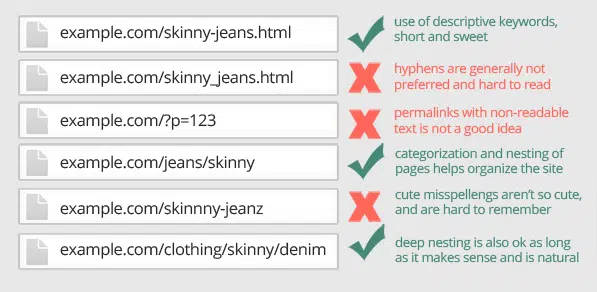
Best Practices for Enhancing Search Visibility:
- Header Tags: Use header tags (H1, H2, etc.) to structure your content clearly. Include keywords in at least the H1 tag to help search engines grasp the main topics of your page.
- Image Optimization: Include alt text for images, describing the image content and using relevant keywords where appropriate. This improves accessibility and provides additional content for search engines to index.
- Internal Linking: Strategically link to other pages within your website to help search engines discover more of your content and to increase the time users spend on your site.
- Mobile Optimization: Ensure your site is responsive and loads quickly on mobile devices, as mobile-friendliness is a ranking factor for search engines.
By consistently applying these on-page SEO guidelines, you can significantly enhance your website’s search engine visibility and user experience, paving the way for better engagement and higher rankings.
Technical SEO Details
Technical SEO refers to the process of optimizing the infrastructure of your website to enable search engines to crawl and index it more effectively. This aspect of SEO is crucial because it deals with the technical factors that impact a website’s visibility in search results.
By ensuring your website is technically sound, you can improve its overall searchability and user experience, which are key to achieving higher rankings.
Site Speed: Importance and Tools
Site speed is a significant ranking factor for search engines like Google. A faster site provides a better user experience and reduces bounce rates. To assess and improve your site speed:
- Use tools like Google PageSpeed Insights, GTmetrix, or Pingdom to analyze your site’s performance and get specific recommendations for improvement.
- Optimize images, leverage browser caching, and minimize JavaScript and CSS to enhance loading times.
Mobile-Friendliness: Why It Matters and How to Ensure Your Site is Mobile-Friendly
With the increasing use of mobile devices to access the internet, having a mobile-friendly website is essential. Mobile-friendliness is also a critical ranking factor, particularly since Google’s shift to mobile-first indexing. To ensure your site is mobile-friendly:
- Implement responsive web design that adjusts content to fit different screen sizes and orientations.
- Use Google’s Mobile-Friendly Test to check how easily a visitor can use your page on a mobile device.
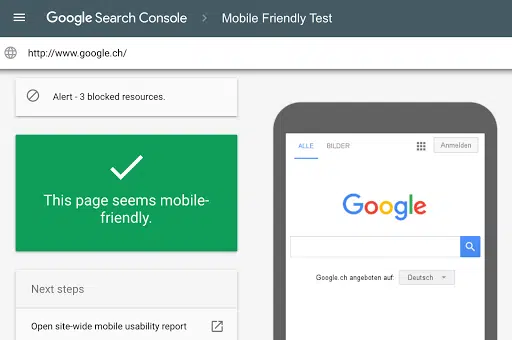
Proper Indexing and Crawlability: Making Your Site Accessible to Search Engines
Ensuring that search engines can easily crawl and index your website is fundamental to appearing in search results. To enhance your site’s crawlability:
- Use a robots.txt file to guide search engines on what parts of your site they can crawl.
- Implement a sitemap to provide search engines with a roadmap of all your important pages.
- Check and manage your site’s crawl budget to ensure search engines are not wasting time crawling irrelevant or duplicate pages.
By focusing on these key aspects of technical SEO, you can significantly improve your site’s structure and performance, making it easier for search engines to understand and rank your content effectively.
Content Marketing Strategies
Content plays a pivotal role in SEO, as it is the primary method through which search engines and users evaluate the quality and relevance of a website. Effective content marketing not only boosts SEO but also engages and retains your audience.
Here’s how you can use content strategically to improve your SEO:
Creating Engaging, High-Quality Content:
Quality content is the cornerstone of effective SEO. Engaging, informative, and well-written content attracts more visitors and encourages them to spend more time on your site, which search engines interpret as a sign of quality and relevance.
- Focus on creating content that provides real value to your audience. This could be through solving problems, providing new insights, or entertaining.
- Ensure your content is well-researched and fact-checked, reflecting expertise and authority, which Google uses as criteria for ranking content.
Using Content to Build Backlinks:
Backlinks — links from other sites to yours — are critical for SEO. They signal to search engines that others value your content, lending your site credibility and authority.
- Create content that is shareable and link-worthy. This includes original research, comprehensive guides, and infographics.
- Reach out to other website owners to share your content, or write guest posts on relevant blogs to gain more inbound links.
Tips for Integrating Keywords Naturally into Content:
While keywords are essential, they must be integrated naturally into your content without compromising quality.
- Use keywords in a way that feels natural in the context of the article. Avoid keyword stuffing as it can lead to penalties from search engines.
- Include keywords in your headlines, subheadings, and throughout the body where they enhance the reader’s understanding.
By focusing on creating high-quality content that engages users and utilizes strategic SEO practices, you can significantly enhance your website’s authority and ranking in search engine results.
Local SEO
Optimizing for local searches is essential for businesses that operate in specific geographic areas. Local SEO helps your business appear in search results when potential customers in your area search for the products or services you offer.
According to a recent study by comScore, nearly 80% of local searches on mobile devices lead to offline purchases, highlighting the significant impact of local SEO on driving in-store traffic and sales.
Optimize Your Google My Business (GMB) Profile
Creating and optimizing a GMB page is crucial. Ensure your business name, address, phone number (NAP), and other details are accurate. Add photos, respond to reviews, and regularly update your listing to improve visibility.
Use Local Keywords
Use keywords that include your location. For example, if you run a bakery in New York, use phrases like “New York bakery” or “best bakery in New York” in your content. This helps search engines associate your business with local queries.
Maintain Consistent Local Citations
Ensure your business is listed in local directories and citation sites with consistent NAP information. This reinforces your business’s credibility and improves local search rankings.
Encourage Customer Reviews
Encourage satisfied customers to leave positive reviews on your GMB page and other review sites. Reviews influence local search rankings and can attract more customers.
Create Localized Content
Create content that connects with local audiences. Blog about local events, news, or community activities to engage your local audience and improve your relevance in local searches.
User Experience (UX) and SEO
User Experience (UX) plays a significant role in SEO by affecting how users interact with your website. A positive UX can lead to higher engagement, more conversions, and improved search engine rankings. Here are key elements of how UX influences SEO:
How UX Influences SEO
Search engines, like Google, prioritize websites that offer a good user experience. Factors such as bounce rate, time on site, and pages per session are indicators of UX that search engines use to rank websites. A well-designed site that keeps visitors engaged and helps them find what they need quickly will generally rank higher.
Importance of Intuitive Design
An intuitive design ensures that users can navigate your website easily. Clear menus, logical page structures, and accessible content make it easy for visitors to find information. This reduces bounce rates and increases the chances of visitors staying longer on your site, both of which positively impact your SEO.
Fast Loading Times
Page speed is a critical factor in UX and SEO. Slow-loading pages frustrate users, leading to higher bounce rates and lower engagement. According to Google, the probability of a bounce increases by 32% as page load time goes from 1 second to 3 seconds.
To improve loading times, optimize images, leverage browser caching, and minimize JavaScript and CSS files. Research indicates that websites with improved UX see up to a 400% increase in conversion rates. Additionally, Google’s latest algorithm updates continue to emphasize user experience as a critical ranking factor, making it more important than ever to focus on UX for SEO success.
Easy Navigation
Easy navigation is crucial for retaining visitors and guiding them through your website. Use clear and consistent navigation menus, include a search bar for quick access to content, and ensure that important pages are no more than a few clicks away from any point on your site. Good navigation improves user satisfaction and encourages visitors to explore more of your site.
Voice Search Optimization
Voice search is rapidly growing in popularity, significantly impacting SEO strategies. With the rise of smart speakers and mobile voice assistants, optimizing for voice search is becoming essential for maintaining and improving search visibility.
Rise of Voice Search and Its Impact on SEO
The increasing use of voice-activated devices like Amazon Alexa, Google Assistant, and Apple Siri has changed how people search for information online.
Voice searches tend to be more conversational and longer than text searches. According to recent data, over 55% of households are expected to own a smart speaker by 2024, and voice search queries are projected to make up 50% of all searches.
Strategies for Optimizing Content for Voice Search
- Use Natural Language: Optimize your content to match the natural, conversational tone of voice queries. Answer questions in a straightforward, easy-to-understand manner.
- Focus on Long-Tail Keywords: Voice searches often include longer phrases. Incorporate long-tail keywords that reflect how people speak and ask questions.
- Answer Questions: Structure your content to answer common questions related to your industry or niche. Use FAQs to address specific queries that users might ask their voice assistants.
- Optimize for Local Search: Many voice searches are local, such as finding nearby businesses. Ensure your local SEO is robust, with accurate and up-to-date information on your Google My Business profile.
- Improve Page Speed and Mobile Optimization: Voice searches are frequently conducted on mobile devices, so ensure your site loads quickly and is mobile-friendly.
Use tools like AnswerThePublic to discover common questions people ask about your topics and optimize your content accordingly.
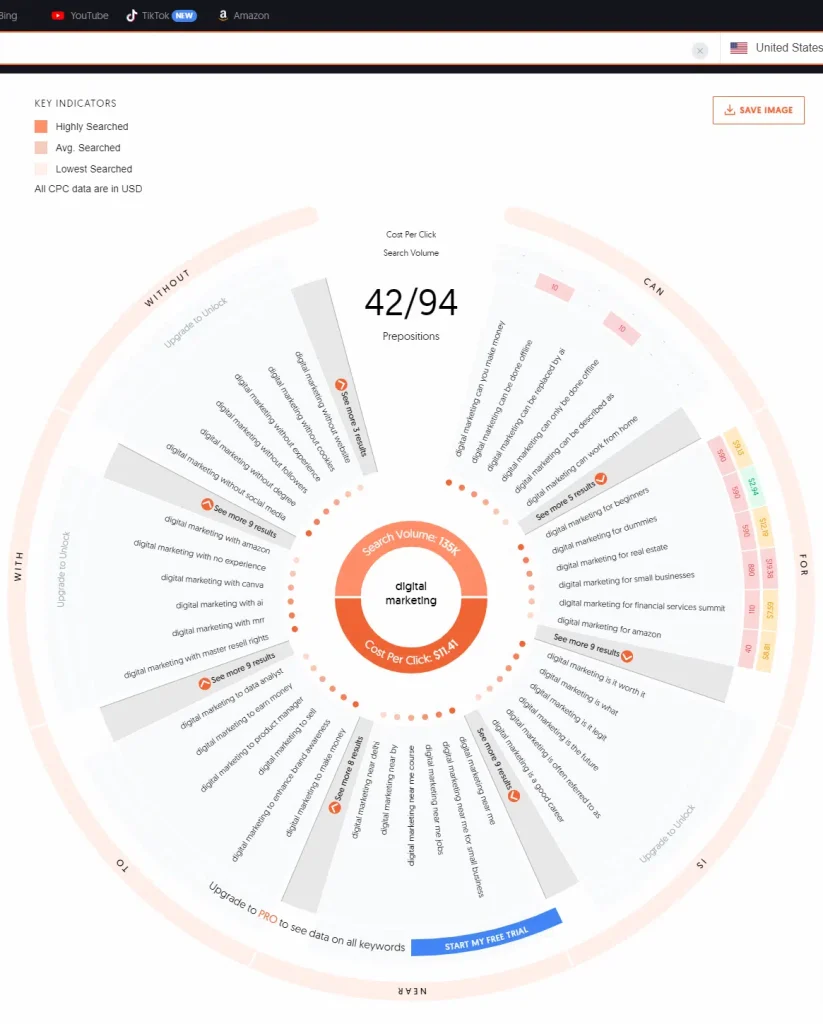
Content Updates
Keeping your content updated and relevant is crucial for maintaining and improving your website’s SEO. Search engines prioritize fresh content, as it is more likely to be accurate, useful, and engaging for users.
Importance of Keeping Content Updated and Relevant
Updating your content regularly, signals to search engines that your website is active and providing current information. Fresh content can improve your search engine rankings, drive more traffic, and increase user engagement.
Additionally, updated content can help address new trends, answer recent queries, and reflect the latest developments in your industry. This is something we do constantly in our monthly calendar activities.
Practices for Reviewing and Updating Old Content
- Regular Audits: Conduct regular content audits to identify outdated information, broken links, and underperforming pages. Use tools like Google Analytics to assess which content needs updating.
- Update Information: Refresh statistics, facts, and figures with the most recent data. Update product descriptions, services, and any other relevant details to ensure accuracy.
- Enhance Quality: Improve the readability and structure of old content. Add new insights, images, or multimedia elements to make the content more engaging.
- SEO Optimization: Reevaluate keywords and incorporate new, relevant keywords. Ensure the content aligns with current SEO best practices, including meta tags, headings, and internal linking.
- Republish and Promote: After updating, republish the content with a current date. Promote the refreshed content through your social media channels and email newsletters to drive new traffic.
Analytics and Reporting
Monitoring your SEO performance is essential for understanding the effectiveness of your strategies and making data-driven adjustments. Tools like Google Analytics provide valuable insights into your website’s performance and user behavior.
Using Tools Like Google Analytics to Monitor SEO Performance
Google Analytics is a powerful tool that helps you track various metrics related to your website’s traffic and user engagement. Key metrics to monitor include:
- Organic Traffic: Measure the number of visitors coming from search engines.
- Bounce Rate: Understand the percentage of visitors who leave your site after viewing only one page.
- Average Session Duration: Track how long users stay on your site.
- Pages Per Session: See how many pages users view during a single visit.
- Conversion Rate: Measure the percentage of visitors who complete desired actions, such as filling out a form or making a purchase.
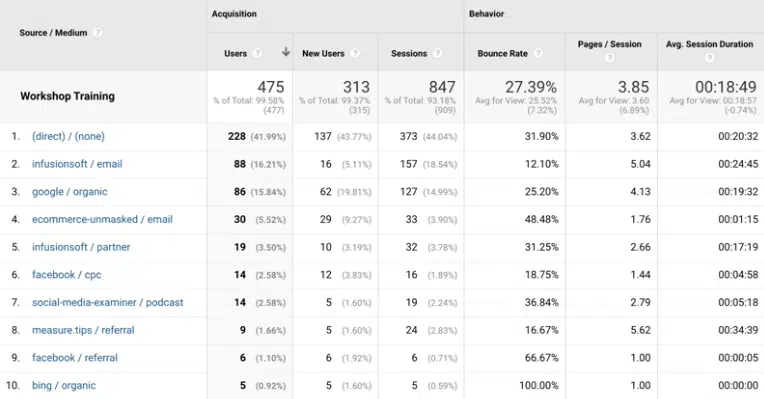
By analyzing these metrics, you can identify strengths and weaknesses in your SEO strategy and understand user behavior.
Making Data-Driven Adjustments to Improve SEO
Once you have gathered data from Google Analytics, use it to make informed decisions. For example:
- Identify High-Performing Content: Determine which pages have the highest traffic and engagement, and replicate these strategies across other pages.
- Optimize Underperforming Pages: Use data to identify pages with high bounce rates or low session durations. Improve these pages by updating content, enhancing user experience, or refining keyword usage.
- Track and Adjust Keywords: Monitor which keywords are driving traffic and conversions. Adjust your content and SEO strategy to focus on high-performing keywords and explore new keyword opportunities.
- A/B Testing: Conduct A/B tests on different elements of your website, such as headlines, images, and calls to action, to see which versions perform better.
Set up custom dashboards and reports in Google Analytics to monitor key metrics at a glance and track progress over time.
SEO Tools and Services Recommendations
Navigating the world of SEO can be complex, but with the right tools and services, it becomes much more manageable. Here’s an overview of essential SEO tools that can help you with various aspects of your strategy, from keyword research to technical analysis.
Recommended Tools for Keyword Research:
Google Keyword Planner: Ideal for beginners, this free tool helps you discover keywords related to your business and see estimates of the searches they receive and the cost to target them.
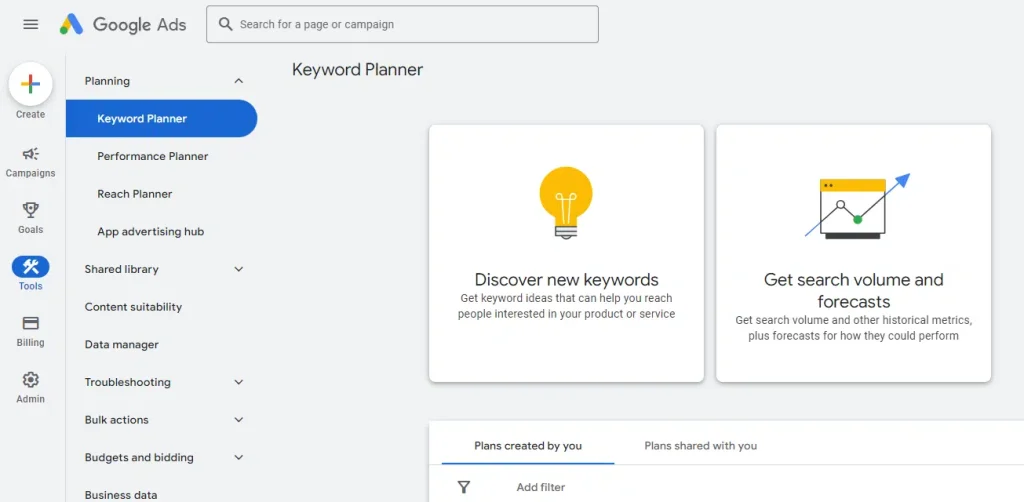
- Ahrefs Keywords Explorer: Offers detailed keyword reports, competition analysis, and keyword position tracking.
Tools for On-Page Optimization:
- Yoast SEO: A popular WordPress plugin that helps you optimize your content, meta tags, and readability.
- SEMrush: Provides comprehensive SEO audits, on-page SEO checker, content templates, and more.
Tools for Technical SEO Analysis:
- Screaming Frog SEO Spider: A desktop program that crawls website URLs to analyze and audit technical and on-page SEO.
- Moz Pro: Offers a suite of tools including site audits, rank tracking, and backlink analysis.
Advice on Choosing the Right Tools:
Choosing the right SEO tools depends largely on your specific needs and budget. For those just starting out, free tools like Google Keyword Planner and Yoast SEO can provide great value. As your needs grow, investing in more comprehensive tools like Ahrefs or SEMrush can offer deeper insights and automation that save time and provide advanced data analysis.
Always consider tools that align with your SEO objectives and offer user-friendly interfaces and solid customer support.
Wrapping Up
Throughout this guide, we’ve explored the foundational aspects of SEO, from understanding how search engines function to optimizing your content and technical infrastructure. We’ve covered the importance of keyword research, the nuances of on-page SEO, and the critical role of technical details that enhance your site’s visibility and usability. Additionally, we’ve delved into the significance of local SEO, the impact of user experience, the rise of voice search, and the necessity of keeping content fresh. We’ve also discussed the importance of using analytics and reporting tools to make data-driven adjustments to your SEO strategy.
By implementing these strategies, you are setting a solid foundation for your website’s performance in search engine rankings. SEO is a journey, and every step you take builds upon the last. I encourage you to start applying the SEO basics we’ve discussed and to continually refine your approach based on results and evolving practices. The landscape of SEO is always changing, and staying proactive is key to success.
Remember, SEO is not a one-time effort but an ongoing process of learning and adaptation. Stay informed about the latest trends and updates, and consistently apply best practices to ensure your website remains competitive in search engine results.


